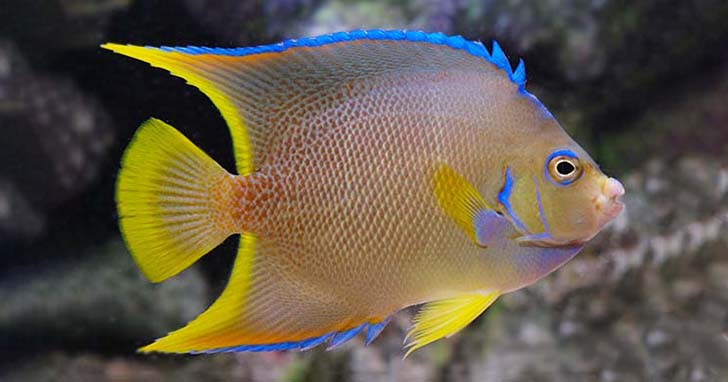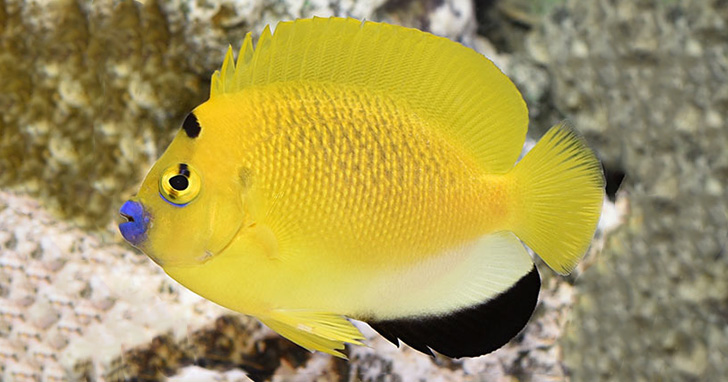The Large Marine Angelfish
Large Marine Angelfish are in the Pomacanthidae family, of which there are an estimated 7 different genus and 86 different species. It is estimated that Large Marine Angelfish have been around for 50 million years and can be found in the Pacific, Atlantic and Indian oceans. Their family name of Pomacanthidae come from the Greek words ‘Poma’ meaning ‘cover’ and ‘Akantha’ meaning ‘thorn’, a nod to the spikes on their gills. With some exceptions, most Large Marine Angelfish typically grow to lengths of 8 to 20 inches.
Displaying striking colors, they have a narrow, flat, disklike profile that creates an elegant, graceful silhouette as they swim through the water. Highly colorful, they display beautiful, striking colors in almost every color. There are species that are one color throughout their body while others display various markings including stripes, bars, spots, or other patterns. Their flattened shape allows them to hide in crevices and rocks.
Most Large Marine Angelfish are semi-aggressive and cannot be kept with others of their own species unless they are part of a mated pair, but they can be kept with Angelfish outside of their species if acclimated as a juvenile. They have been known to eat smaller fish and nip at marine inverts, clams, and corals.

Asfur Angelfish (Pomacanthus asfur)
Large Marine Angelfish tank conditions
Because of their size, a recommended aquarium size is 200 gallons or larger with a slow waterflow and filtration to remove nitrates and phosphates. With some exceptions and depending on the species, temperatures should be kept within 72°-78° F within a salinity range of 1.020-1.025 sg. Even though these are larger fish, they should be provided hiding places with the use of décor. Live rock can provide Angelfish a natural food source. If tank conditions are not ideal, Large Marine Angelfish are susceptible to fin rot.

Blue Angelfish (Holacanthus bermudensis)
Large Marine Angelfish tankmates
Size is important when selecting tankmates for Large Marine Angelfish. Although they are tolerant of Dwarf Angelfish, they should be housed with tankmates that are similar in size. The following fish can make appropriate tankmates: Tangs, Wrasses, Triggerfish, Puffers, Butterflyfish, Damsels, and Ocellaris Clownfish, among others. It is advisable to add other fish to your marine aquarium before adding the Large Marine Angelfish, so they do not perceive the other fish as intruders.

Flagfin Angelfish (Apolemichthys trimaculatus)
Large Marine Angelfish diet
Large Marine Angelfish feed on plankton when they are young. When older, they are omnivores who feed on a variety of algae and meaty foods such as shrimp, prawn, krill and Mysis shrimp in flakes, pellets, or frozen form.
Some Angelfish species have a specialized diet, such as the Holocanthus Angelfish that only eat sponges.